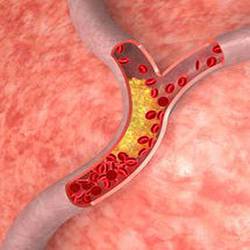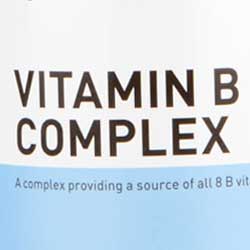DRI / RDA for Calcium / Magnesium and Vitamins A, D, K
| Cellular Nutrition| Calcium | Magnesium | ||||
Calcium
|
Magnesium
|
||||
|
Best time to take Calcium: Late day / bedtime (or last meal before bedtime if working night shift). If amounts in excess of 500mg are taken, the balance should be split equally between mid and late-day meals. For best absorption, Calcium pills should be taken with food, and doses should not exceed 500 mg at a time. |
Best time to take Magnesium: Late day / bedtime. With food (preferably), or without food. | ||||
|
Cellular / Intracellular Attributes and Interactions:
|
|||||
| Calcium Synergists: Copper, potassium, boron, strontium, sodium, titanium, CoQ10, Vitamin B5, Vit D, Vit K, sat. fats, magnesium*. | Magnesium Synergists: Chromium, zinc, boron, CoQ10, Vitamin B2, Vitamin B6, insoluble fiber, calcium*, Vitamin D*. | ||||
| Calcium Antagonists / Inhibitors: *Phosphorus, iron, manganese, germanium, chloride, bismuth, chromium, zinc, sulfur, Vitamin A, Vitamin C, Vitamin E, niacin / niacinamide, PABA, insoluble fiber, phytic acid, lecithin, protein, oxalic acid, mineral oil, alcohol, caffeine, w3 (e.g. flaxseed oil), magnesium*. | Magnesium Antagonists / Inhibitors: Sodium, potassium, iron, selenium, copper, lithium, silicon / silica, manganese, Vitamin A, Vitamin B1, Vitamin C, Vitamin E, niacin / niacinamide, PABA, Vitamin K, folate, choline, uric acid, alcohol, w6 (e.g. primrose, pumpkin seed oil), calcium*, Vitamin D* | ||||
| * Dose-dependent - They are co-factors at normal levels, and antagonists at higher levels. | |||||
High/Low Levels / Deficiency / Toxicity - Symptoms and Risk Factors: |
|||||
| Low Calcium: Insomnia, anxiety, nervousness, depression, fatigue, muscle / joint pains, muscle spasms / cramps, high stomach acid, osteoporosis, seizures, birth defects, miscarriage, high blood pressure, irregular heartbeat, cardiovascular disease, hemorrhagic stroke, aneurysms, PMS, dysmenorrhea (painful periods), rickets, higher risk for some cancers. | Low Magnesium: Irregular heart beat, cardiovascular disease, anxiety, insomnia, nervousness, fatigue, muscle / joint pains, osteoporosis, seizures, high stomach acid, asthma, high blood pressure, PMS, depression, sweating, muscle spasms / cramps, dysmenorrhea, angina, constipation, migraine / headaches. | ||||
| High Calcium: Arteriosclerosis, cardiovascular disease, arrhythmia, ischemic heart disease and stroke, hypertension, low stomach acid, depression, fatigue, glaucoma, higher risk for several cancers, muscle / joint pains, osteoporosis, osteoarthritis, calcification, dry skin, constipation. | High Magnesium: Cardiovascular disease, arrhythmia, cardiac arrest, coma, muscle spasms, joint / spinal degeneration, bone loss, low stomach acid, low body temperature, low blood pressure, higher risk for several cancers, intestinal / genitourinary bleeding, dry skin, fatigue, depression, dehydration, diarrhea. | ||||
| Calcium Sources: Dairy products, tofu, almonds, brazil nuts, salmon, sardines, broccoli, collard greens, kale, cauliflower, soybeans, seaweed / kelp, hard water, molasses. | Magnesium Sources: Almonds, brazil nuts, soybeans, wheat germ, seeds, wheat bran, millet, legumes, dark green vegetables, fruit, seafood, hard water. | ||||
DRI - Dietary Reference Intake
RDA - Recommended Dietary Allowance
AI - Adequate Intake
UL - Tolerable Upper Intake Level
RDA - Recommended Dietary Allowance
AI - Adequate Intake
UL - Tolerable Upper Intake Level
| Vitamin A (Retinol) Vitamin A2 (3,4-dehydro-retinol) Vitamin A3 (3-hydroxy-retinol) |
Vitamin D (Calciferol) Vitamin D2 from plants (Ergocalciferol) Vitamin D3 from animals (Cholecalciferol) |
||||
Vitamin A (Retinol)
|
|||||
|
AGE
0-6 months 6-12 months 1-3 years 4-8 years 9-13 years male 14 + years male 9-13 years fem. 14 + years fem. pregnant lactating ------------------- UL Therapeutic Range |
DRI (RDA)
2,000 IU or 400 mcg 2,500 IU / 500 mcg 1,500 IU / 300 mcg 2,000 IU / 400 mcg 3,000 IU / 600 mcg 4,500 IU / 900 mcg 3,000 IU / 600 mcg 3,500 IU / 700 mcg 3,750 IU / 750 mcg 6,250 IU / 1250 mcg 3,000 IU - 15,000 IU 5,000 IU - 100,000 IU |
Therapeutic Range for Beta carotene: 10,000 IU - 100,000 IU (ideally from mixed carotenoids).
Vitamin D (Calciferol)
Vitamin D2 from plants (Ergocalciferol)
Vitamin D3 from animals (Cholecalciferol)
|
AGE
0-6 months 6-12 months 1-3 years 4-8 years 9-13 years male 14 + years male 9-13 years fem. 14 + years fem. pregnant lactating ------------------- UL Therapeutic Range |
DRI (RDA)
400 IU or 10 mcg 400 IU / 10 mcg 600 IU / 15 mcg 600 IU / 15 mcg 600 IU / 15 mcg 600-800 IU/ 15-20mcg 600 IU / 15 mcg 600-800 IU/ 15-20mcg 600 IU / 15 mcg 600 IU / 15 mcg 1,000 IU - 4,000 IU 5,000 IU - 100,000 IU |
Daily minimum intake of Vitamin D3 recommended by many researchers for adults andpregnant females living in the Northern Hemisphere is 2,000 - 4,000 IU (50 -100 mcg) / day.
Cellular / Intracellular Attributes and Interactions:
High/Low Levels / Deficiency / Toxicity - Symptoms and Risk Factors:
Beta carotene: Carotenemia or Carotenodermia (orange skin color).
Beta carotene Sources(Provitamin A): Carrots, broccoli, apricots, pumpkin, sweet potatoes, spinach, squash, peppers, chlorella, watermelon.
D3: Fish, fish oils, eggs, liver, fortified dairy products.
D2: Irradiated foods. Some mushrooms produce large amounts of Vit D(> 6000 IU per 100 g) when exposed to UV rays for a few minutes after harvest.
DRI - Dietary Reference Intake
RDA - Recommended Dietary Allowance
AI - Adequate Intake
UL - Tolerable Upper Intake Level
RDA - Recommended Dietary Allowance
AI - Adequate Intake
UL - Tolerable Upper Intake Level
| Vitamin K as: Vitamin K1 from plants sources(Phylloquinone, Phytonadione) Vitamin K2 as: MK4 from meat, eggs, dairy(Menatetrenone) MK7 from fermented food or intestinal bacteria(Menaquinone) |
|||
Vitamin K as:
|
|||
| Best time to take Vitamin K: Morning to afternoon; preferably with fatty food. | |||
|
Cellular / Intracellular Attributes and Interactions:
|
|||
| Vitamin K Synergists: Calcium, copper, Vitamin B5, flavonoids, Vitamin D*. [Vitamin K protects against Vitamin D overdose]. | |||
| Vitamin K Antagonists / Inhibitors: Vitamin A, Vitamin E, mineral oil, oxalates, alcohol, Coenzyme Q10, blood thinners / anticoagulants (coumadin), Antibiotics - by killing intestinal bacteria. | |||
| * Dose-dependent - They are co-factors at normal levels, and antagonists at higher levels. | |||
High/Low Levels / Deficiency / Toxicity - Symptoms and Risk Factors: |
|||
| Low Vitamin K: Bleeding, abnormal / prolonged blood clotting time, bruising, osteoporosis, cardiovascular disease, stroke, calcification, behavioral problems, failure to grow and develop normally in infants. | |||
| High Vitamin K: Liver impairment / damage, hemolytic anemia, stomach upset, skin rash, brain damage in infants. | |||
| Vitamin K Sources: Green tea, kale, collards, spinach, cauliflower, cabbage, alfalfa, soybeans, tomatoes, oats, liver, egg yolk, meat, fish liver oils, blackstrap molasses. Vitamin K is also made by intestinal bacteria. | |||
DRI - Dietary Reference Intake
RDA - Recommended Dietary Allowance
AI - Adequate Intake
UL - Tolerable Upper Intake Level
RDA - Recommended Dietary Allowance
AI - Adequate Intake
UL - Tolerable Upper Intake Level

 Manganese may help with some symptoms of Parkinson's disease such as muscle rigidity and twitching...
Manganese may help with some symptoms of Parkinson's disease such as muscle rigidity and twitching...
 Research shows that phytosterols such as beta-sitosterol may help normalize the function of natural killer cells and T-helper lymphocytes...
Research shows that phytosterols such as beta-sitosterol may help normalize the function of natural killer cells and T-helper lymphocytes...
 Iron deficiency may be suspect with some forms of ADHD. 84% of children with ADHD were found to have abnormally low levels of ferritin...
Iron deficiency may be suspect with some forms of ADHD. 84% of children with ADHD were found to have abnormally low levels of ferritin...
 A high intake of B Vitamins can trigger heart palpitations, HBP, major complications in patients with congestive heart disease...
A high intake of B Vitamins can trigger heart palpitations, HBP, major complications in patients with congestive heart disease...